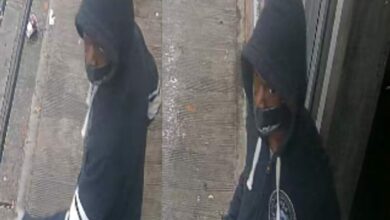Hochul administration is flooding Harlem with drug treatment clinics, Dem congressman complains: ‘Bad planning’

Gov. Kathy Hochul’s administration is oversaturating Harlem with drug treatment facilities — and it’s got to stop, fed up Congressman Adriano Espaillat (D-13) said.
“It’s too much for the community. It’s totally out of control,” Espaillat told The Post.
There are currently 13 such clinics — many running along or near the spine of 125th Street — with 75% to 80% of patients coming from outside of Harlem, the congressman said.
The high concentration of treatment clinics serving addicts is also attracting more drug dealers to the neighborhood, claimed Espaillat.
For the mess he blames the state Office of Addiction Services and Supports, which licenses and approves drug treatment programs. Hochul oversees the agency.
“It’s bad planning,” Espaillat said. “OASAS has been horrible.”
He said he’s personally discussed the problem with the governor, but that the status quo is untenable.
Espaillat said merchant groups like the 125th Business Improvement District are furious and described the abundance of drug treatment clinics in a single corridor a form of “redlining.” The merchants, feeling under siege, even objected to opening a legal pot store across from the Apollo Theater.
According to a list provided by the congressman’s office, the locations of just some of the addiction centers include:
- 119 W. 124th Street
- 103 East 125th Street
- 132 W. 125th Street
- 2406 Amsterdam Avenue
- 2191 Third Avenue
- 2367-69 Second Avenue
“I have long expressed my concerns and am deeply troubled by the number of OASAS clinics and their placement in my district,” said Espaillat. “There is an undeniably disproportionate amount of methadone treatment clinics in communities in my district compared to the residents who need it.
“This disparity results in nearly an 80% increase of treatment-seekers from outside of our communities to commute to Harlem and East Harlem for these services, a pattern which has subsequently created an increase in the drug dealers in the surrounding area as well as an increase in drug use and overdoses in our communities,” he continued.
He said he has urged OASAS to relocate some of the drug treatment clinics so they are distributed more equitably across the city “as opposed to the current oversaturation in predominantly African American and Latino neighborhoods,” he said.
Espaillat noted that northern Manhattan is shouldering more than its share of responsibility in helping addicts get their lives back on track.
His district includes two controversial “safe” drug injection sites — where addicts can bring their own drugs and are provided with clean needles to shoot up under the watch of medical professionals. A report by The Post revealed that drug dealers sold narcotics to patients at the injection sites.
The fentanyl crisis has only worsened the situation, the congressman said.
“I’ve seen people shooting up drugs between cars,” he said.
The Post previously reported about a legion of drug-addicted zombies roaming East Harlem and transforming parts of the neighborhood into lawless, open-air shooting galleries.
The congressman knows the damage that open drug use can cause a community, having battled the crack epidemic that infected Washington Heights in the 1980s and early 1990s.
OASAS and Hochul’s office had no immediate comment.




